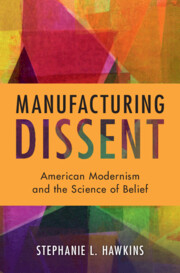Refine search
Actions for selected content:
261 results
8 - Ukraine’s Support Coalition and the Long (Info) War
- from Part II - Case Studies
-
-
- Book:
- Securing Democracies
- Published online:
- 19 December 2025
- Print publication:
- 22 January 2026, pp 161-188
-
- Chapter
-
- You have access
- Open access
- HTML
- Export citation
Conclusion
-
- Book:
- Theatre and Censorship in France from Revolution to Restoration
- Published online:
- 30 November 2025
- Print publication:
- 18 December 2025, pp 244-249
-
- Chapter
- Export citation
Music, Ideology, and Youth: A Case Study of the Song “Salām Farmāndeh” and the Evolution of Soruds in Contemporary Iran
-
- Journal:
- Iranian Studies ,
- Published online by Cambridge University Press:
- 18 December 2025, pp. 1-22
-
- Article
- Export citation
Chapter 1 - The Bureaucratic Censorship Process
- from Part I - Bureaucratic and Lateral Censorship
-
- Book:
- Theatre and Censorship in France from Revolution to Restoration
- Published online:
- 30 November 2025
- Print publication:
- 18 December 2025, pp 27-67
-
- Chapter
- Export citation
Conditions of subversive reach comparing societal and strategic factors for Russian propaganda outlets’ reach among Western European fringe communities
-
- Journal:
- European Journal of International Security , First View
- Published online by Cambridge University Press:
- 12 December 2025, pp. 1-23
-
- Article
-
- You have access
- Open access
- HTML
- Export citation
Epilogue
-
- Book:
- Everyday Occupation
- Published online:
- 27 November 2025
- Print publication:
- 11 December 2025, pp 196-212
-
- Chapter
-
- You have access
- Open access
- HTML
- Export citation
5 - Sasun in the British Press
-
- Book:
- The Conquest of the Mountains
- Published online:
- 14 November 2025
- Print publication:
- 11 December 2025, pp 133-154
-
- Chapter
- Export citation
Reckoning with Reality: Correcting National Overconfidence in a Rising Power
-
- Journal:
- International Organization , First View
- Published online by Cambridge University Press:
- 21 November 2025, pp. 1-40
-
- Article
-
- You have access
- Open access
- HTML
- Export citation
13 - From Alliance to Enmity, 1945–1953
-
- Book:
- Distant Friends and Intimate Enemies
- Published online:
- 30 October 2025
- Print publication:
- 20 November 2025, pp 256-282
-
- Chapter
- Export citation
14 - Crises and Coexistence, 1953–1963
-
- Book:
- Distant Friends and Intimate Enemies
- Published online:
- 30 October 2025
- Print publication:
- 20 November 2025, pp 283-311
-
- Chapter
- Export citation
16 - The Soviet War Effort
- from Part V - Home Fronts
-
-
- Book:
- The Cambridge Companion to the Nazi-Soviet War
- Published online:
- 13 November 2025
- Print publication:
- 20 November 2025, pp 281-298
-
- Chapter
- Export citation
How Does an Ideology Spread? Archival Evidence from an Extreme Case
-
- Journal:
- Perspectives on Politics , First View
- Published online by Cambridge University Press:
- 17 November 2025, pp. 1-18
-
- Article
-
- You have access
- Open access
- HTML
- Export citation
Journey to the northeast: producing Chinese folk performances with the Japanese media industry amid empire expansion
-
- Journal:
- International Journal of Asian Studies , First View
- Published online by Cambridge University Press:
- 28 October 2025, pp. 1-21
-
- Article
-
- You have access
- Open access
- HTML
- Export citation
24 - The Nation’s Image in Songs: Folk Music Research and Revival in the Twentieth Century
- from Part III - The Twentieth Century and Beyond
-
-
- Book:
- A History of Music in the Czech Lands
- Published online:
- 21 October 2025
- Print publication:
- 16 October 2025, pp 335-348
-
- Chapter
- Export citation
Chapter 3 - The Importance of Religion in Achaemenid Leadership
-
-
- Book:
- Leadership in the Ancient World
- Published online:
- 14 September 2025
- Print publication:
- 16 October 2025, pp 58-87
-
- Chapter
- Export citation
Chapter 3 - Traditional Media Management
-
- Book:
- Politicians and Mass Media in the Age of Empire
- Published online:
- 20 September 2025
- Print publication:
- 09 October 2025, pp 95-133
-
- Chapter
- Export citation

Manufacturing Dissent
- American Modernism and the Science of Belief
-
- Published online:
- 03 October 2025
- Print publication:
- 21 August 2025
1 - Protecting Bad Intel in a Dirty War
- from Part I - Struggle to Conceal
-
- Book:
- Curating the Colonial Past
- Published online:
- 12 September 2025
- Print publication:
- 02 October 2025, pp 35-57
-
- Chapter
- Export citation
2 - Where God Was Born: Ramajanmbhoomi and Babri Masjid
-
- Book:
- Weaponizing Language
- Published online:
- 27 November 2025
- Print publication:
- 28 August 2025, pp 48-87
-
- Chapter
- Export citation
1 - Cartographies of Language and Citizenship
-
- Book:
- Weaponizing Language
- Published online:
- 27 November 2025
- Print publication:
- 28 August 2025, pp 21-47
-
- Chapter
- Export citation
